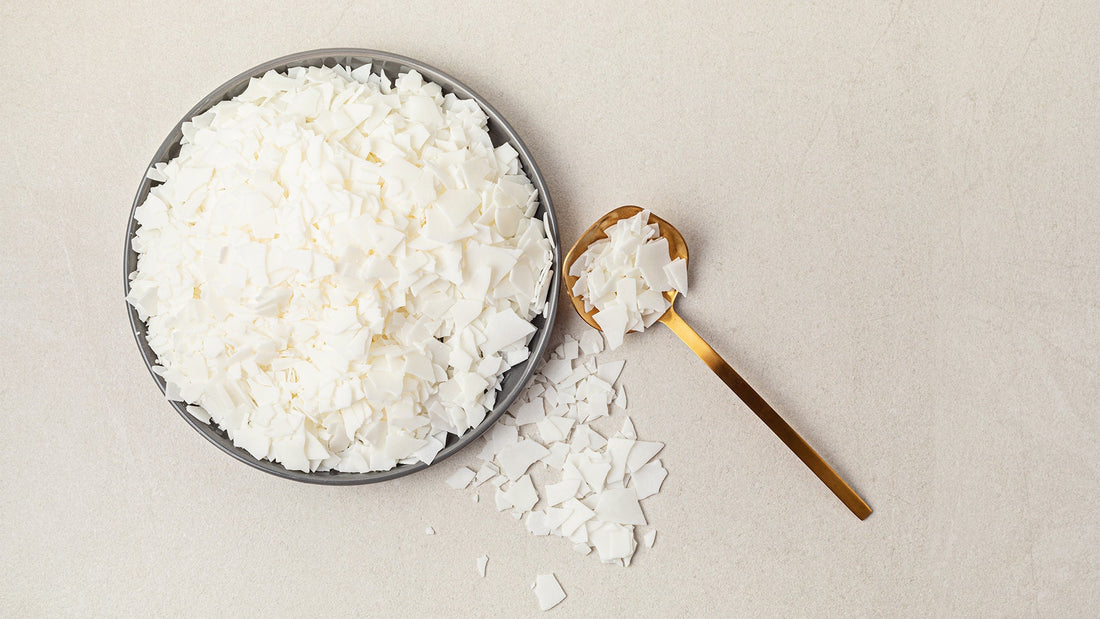
The Ultimate Guide to Candle Wax: Types, Benefits & How to Choose
Share
Which Candle Wax Is Right for You?
Candle making is more than just melting wax and pouring it into a container. The type of wax you choose determines how your candle looks, smells, and burns. With so many wax options available today, it can feel overwhelming to know which one is right for your project.
This guide is designed to help candle makers—from beginners to experienced artisans—understand the different types of candle wax, their pros and cons, and the best uses for each.
Why Does Wax Matter?
Wax is the foundation of a candle. It acts as the fuel that sustains the flame while also carrying fragrance and color. Different waxes vary in:
Burn time
Fragrance throw (both cold and hot)
Appearance and finish
Environmental impact
Cost and availability
Choosing the right wax is one of the most important decisions in candle making.
Types of Candle Wax
1) Paraffin Wax
Paraffin wax is the most widely used wax in the world. It’s a byproduct of petroleum refining and has been used for decades in commercial candles.
Pros: Affordable, versatile, holds fragrance and color very well, produces a smooth glossy finish.
Cons: Non-renewable, produces more soot than natural waxes, not considered eco-friendly.
Best for: Beginners, mass-market candles, projects needing strong scent throw.
2) Soy Wax
Soy wax is made from hydrogenated soybean oil and has quickly become one of the most popular natural waxes.
Pros: Renewable, biodegradable, clean burning with little soot, long burn time, creamy finish.
Cons: Can frost (white patches on surface), sometimes weaker hot throw than paraffin.
Best for: Jar candles, melts, eco-conscious customers.
3) Beeswax
Beeswax is a natural wax produced by honeybees. It has been used for centuries and is prized for its warm, honey-like aroma.
Pros: Natural, long burning, air purifying (emits negative ions), beautiful golden color.
Cons: Expensive, subtle scent throw, may be harder to scent with added fragrances.
Best for: Luxury or heritage candles, tapers, natural product lines.
4) Palm Wax
Palm wax is derived from palm oil and forms beautiful crystalline or feather-like patterns on candles.
Pros: Unique textured finish, long burn time, firm structure.
Cons: Environmental concerns—only use sustainably sourced palm wax.
Best for: Decorative pillar candles, visually striking designs.
5) Gel Wax
Technically not a wax, gel wax is made of mineral oil and polymer resin. It’s transparent, allowing makers to embed decorative items.
Pros: Clear and decorative, fun for novelty candles, holds fragrance well.
Cons: Burns hotter, requires special containers, faster burn than other waxes.
Best for: Decorative showpieces, embed candles.
6) Paraffin-Soy Blends
Blended waxes combine the best of both worlds. Paraffin-soy blends offer better scent throw than soy alone and a cleaner burn than pure paraffin.
Pros: Balanced performance, versatile, more affordable than natural waxes like coconut or beeswax.
Cons: Not 100% natural, still contains paraffin.
Best for: Makers looking for compromise between performance and eco-friendliness.
7) Coconut Wax
Coconut wax is made from the meat of coconuts. It’s one of the most sustainable and premium waxes available.
Pros: Renewable, smooth creamy finish, excellent fragrance retention, clean burn.
Cons: Expensive, often blended with soy for stability.
Best for: Luxury container candles, high-end candle brands.
8) Rapeseed Wax (Canola Wax)
Rapeseed wax is made from the oil of the rapeseed plant. It’s widely used in Europe and gaining popularity worldwide.
Pros: Plant-based, sustainable, smooth creamy texture, clean burn.
Cons: Less common in the U.S., can be harder to source.
Best for: Eco-friendly candle lines, alternatives to soy.
9) Bayberry Wax
Bayberry wax is made from the berries of the bayberry shrub and carries a nostalgic history in candle making.
Pros: Natural, deep green color, traditional holiday scent.
Cons: Rare, expensive, limited supply.
Best for: Heritage or holiday candles, seasonal collections.
FAQs About Candle Wax
Which candle wax lasts the longest?
Beeswax and soy wax typically burn the longest.
Which wax holds fragrance best?
Paraffin has the strongest scent throw, but coconut and soy blends perform well too.
What’s the cleanest burning wax?
Soy, coconut, beeswax, and rapeseed are the cleanest, eco-friendly options.
What’s the best wax for beginners?
Soy wax—it’s forgiving, affordable, and easy to work with.
Can I mix different waxes?
Yes! Blending is common and helps achieve specific burn qualities and fragrance performance.
Tips for Choosing the Right Wax
Think about your customers. Do they prefer natural, eco-friendly candles or strong, long-lasting scents?
Consider your price point. Beeswax and coconut wax cost more than soy or paraffin.
Test before committing. Try small batches of different waxes to see how they perform.
Match wax to your container or style. For pillars, choose harder waxes like beeswax or palm. For jars, soy and coconut are great options.
Final Thoughts
There’s no single “best” candle wax—just the best wax for your project and goals. Each type has its strengths, from paraffin’s affordability to soy’s eco-friendliness to beeswax’s natural charm.
At Columbus Candle Supply, we carry a wide range of candle waxes so you can experiment and find the perfect fit for your candles. Whether you’re just starting out or running a full candle business, the right wax makes all the difference.
